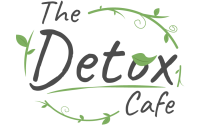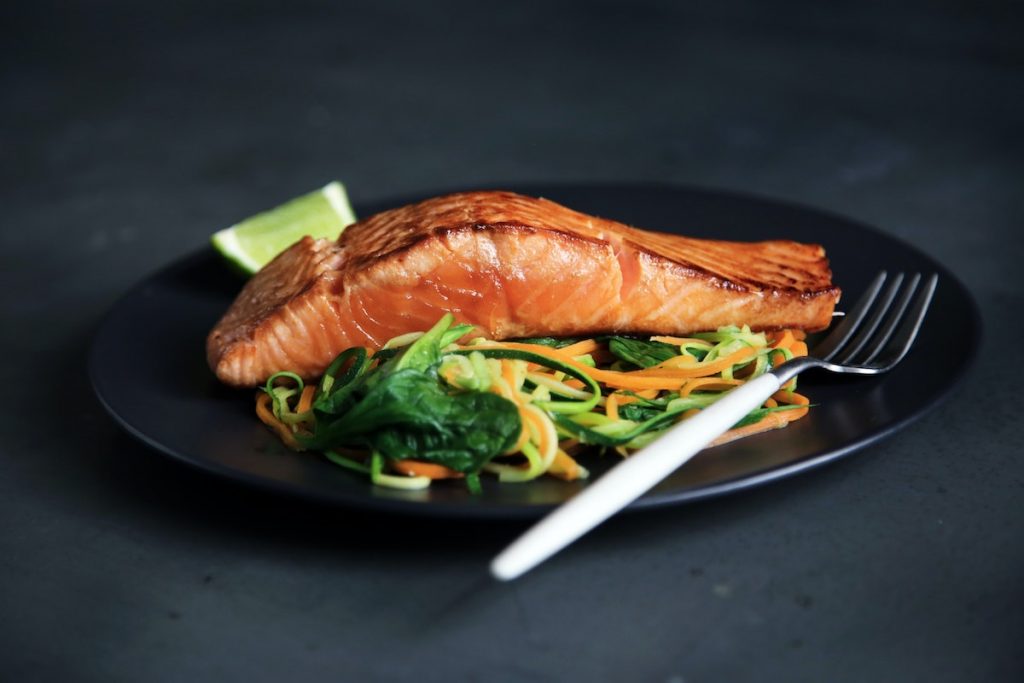Salmon is the very definition of “the best of both worlds” when it comes to food. Many people love salmon because of its rich and buttery flavor. And the best part is you’re doing your body a favor when you consume salmon. After all, it is known for its omega-3 fatty acids and high protein content.
Simply put, salmon is the epitome of eating deliciously and healthily at the same time.
So how many calories are there in salmon? What are its health benefits? And how much salmon is enough per person?
No Two Salmons are the Same
There are different types of Pacific salmons. Your selection includes:
- Coho
- Chinook (King)
- Pink
- Sockeye
- Atlantic
Atlantic salmon is one of the most popular salmon options, especially in the United States. Since the US prohibits the fishing of Atlantic salmon, the ones you see being sold in the supermarkets are farm-raised salmon. Most of the salmon in the US are harvested in Alaska, with most of the species available, either canned, frozen or fresh.
How Many Calories are There in Salmon?

The calories in salmon depend on the type of salmon you consume. Its calorie content can be as low as 197 and as high as 304, depending on the species you eat.
The basic Atlantic salmon has the following nutrition facts (based on a serving size of 85 grams or three ounces):
- Calories: 121
- Protein: 17 grams
- Fiber: 0 grams.
- Fat: 5.4 grams
- Carbohydrates: 0 grams
How many calories are there in other salmon types, though?
Here’s a basic rundown of the calories in common salmon types.
- Sockeye Salmon. A six-ounce serving of Sockeye salmon has 286 calories with 14 grams fat and 36 grams of protein. Its high-fat content comes with a richer flavor, which makes it a great option for grilling or broiling.
- King Salmon. The Chinook salmon can be easily identified by the color of its flesh, which usually ranges from bright red to ivory. In terms of calories, a six-ounce serving of King Salmon has 304 calories, 17.7 grams of fat and 33.9 grams of proteins.
- Pink Salmon. The Pink salmon has the lowest calorie content compared to all the other salmon types. Per serving, you consume 197 calories, 5.9 grams of fat and 33.9 grams of protein.
- Chum Salmon. A single serving of Chum salmon contains 204 calories with 6.4 grams of fat and 34.3 grams of protein.
A piece of salmon fillet also has 360 calories, as well as the fat content of 20 grams and protein content of 47 grams.
What are the Health Benefits of Salmon?
Fish has always been on the good side of everyone’s diet — as long as it’s consumed in moderation. In particular, salmon is rich in different vitamins and minerals.
If you eat salmon regularly, you’ll benefit from the following:
Supports Heart Health
According to the American Heart Association, eating fish twice a week is good for your heart. People who eat fish regularly reduce their risk for cardiovascular diseases. Salmon’s Omega-3 fat content reduces inflammation and prevents stoke-causing blood clots, both of which are strong players in the progression of common heart diseases.
Salmon is also rich in potassium, which keeps your blood pressure at healthy levels.
Boosts Your Mood
Salmon is also rich in amino acids, including those that regulate your mood. The consumption of salmon and other fish has also been linked to lower risks of depression. Salmon’s Omega-3 content is also good for the brain and can improve your mood, too.
Reduces Your Risk of Osteoporosis
Canned wild salmon is a good source of both calcium and vitamin D, which are essential in strengthening your bones. On the other hand, farmed salmon also contains vitamin D but the amount of vitamin D it contains depends on the salmon feed used.
Can I Eat Salmon Every Day?

As mentioned above, salmon is rich in nutritional benefits, making it an excellent addition to your diet. It’s also easy to prepare; you can smoke, pan sear, grill or bake salmon. And the best part is you can eat salmon every day, according to a study from Harvard University.
If you eat salmon every day, your eyes will thank you for it. The Omega-3 fatty acid content of salmon improves the oil layer in your eye’s tear film. This oil layer prevents your tears, which lubricate your eyes, from evaporating rapidly. Also, eating salmon is good for your retinal health.
Eating salmon daily will also help you feel more energetic. If you’re always on the go or are physically active, adding salmon to your daily diet ensures you function at your best. You’ll feel more energetic due to salmon’s high B12 content. Half a salmon fillet nourishes you with 80 percent of the recommended B12 intake.
The protein boost from salmon can also help you recover from your injuries. Your body needs protein to build new cells. So, if you consume salmon daily, you’re helping your body achieve its fitness goals.
Is Salmon Good for Weight Loss?
Some people have a fast metabolism. They are free to eat whatever they want and still maintain a slender figure. But most people don’t have a fast metabolism. They’re always finding ways to shed the pounds.
If this is you, consider adding salmon to your diet since it can also help you lose weight. As mentioned above, salmon is a low-calorie/high-protein food. Eating foods that are high in protein increases your metabolic rate, as well as keeps you full. This makes salmon a delightful addition to your keto diet.
Making salmon a central source of protein in your diet is better than red meat options. The fat in salmon is heart-healthy while red meat is high in saturated fat, which isn’t good for the health. So, if you want to lose weight and load up on the protein minus the red meat, enjoy eating salmon.
How Much Salmon Should I Eat in a Week?
Experts recommend adults consume at least eight ounces of seafood weekly. You can enjoy two portions of seafood per week, especially fish that are high in Omega-3, which includes salmon.
As for children, the EPA and the FDA recommend two to four ounces (one to two servings) of seafood. Young children and pregnant women are discouraged from consuming fish with high mercury content. Fortunately, salmon isn’t one of them.
How to Prepare Salmon Properly
Contrary to popular belief, fish shouldn’t smell “too fishy.” When shopping for salmon (or any type of fish), go for fresh and mild fish. Also, only buy fish that is displayed on a bed of ice or refrigerated. Also, frozen salmon should be solid, not squishy or leaking.
When preparing your salmon, everything should be kept clean. This includes your cutting boards, utensils and hands. This prevents bacteria from spreading to your other foods.
If you are preparing frozen salmon, thaw it in the fridge overnight. But if you want to cook it immediately, thaw it in cold water in a bag. You can also thaw it in the microwave, but you need to immediately cook your salmon.
How to Cook Your Salmon
There are many ways to serve your salmon while keeping the calories in mind. Consider the following:
- Steaming or poaching. This is the healthiest way to cook your salmon. Free from oil and fat, all you need is water or stock to keep your salmons juicy and moist. Steaming your salmon with water is the healthiest option.
- Baking. If you want to stay healthy but add more flavor, brush a little butter or oil on some salmon fillet and bake it. Baking is perfect for thick fillet cuts of salmon, as well as whole salmon. If you want to bake your salmon, wrap the fillet in foil along with the seasonings and herbs then let it bake.
- Smoking. Most smoked salmon recipes involve curing salmon fillet before smoking it via the cold or hot method.
The Bottom Line
So how many calories are in a salmon? It depends on the type of salmon you choose, how you cook it and the ingredients you use. Salmon is one of the healthiest seafood items in the market. It can enrich your daily diet, as long as you cook it right.


